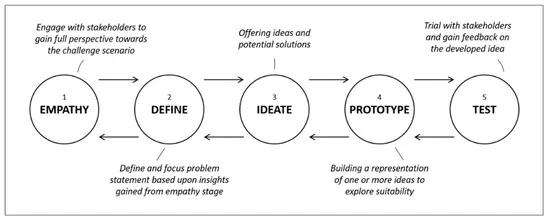By Jeremiah Folorunso
In most conversations, design is almost always seen as an aesthetic pursuit, with its primary focus on making things look attractive. However, at the core, design really is about creating solutions for problems. Infact, for a solution to be functional, one of the many things that has to be put into consideration to solve human problems lies in the concept of design thinking (it’s process and its deliverables).
Interestingly, the belief that design’s primary focus is on aesthetic can also be seen in persons looking to get started in design. Over the course of my career i have had to teach design on multiple occasions. I have come to discover that most of students easily want to jump into the tool without understanding the core of the design and how it relates to solving real and existing problems.
Design Thinking

Design Thinking is a problem solving approach with an iterative, non-linear process used to understand user’s and their requirements while also creating ideas and solutions that fits these requirements. It consists of the following stages:
Empathy Phase: The goal here is to understand the needs, experiences, and problems of people. This often involves deep user research, interviews, and observation.
Define Phase: Clearly articulating the problem to be solved This phase really involves bringing a unity between the insights gotten from the empathy stage so as to pinpoint exactly what the challenge is.
Ideation Phase: Understanding the problem is key as it also guides you into the kind of solution to focus on. Creativity is crucial here, as this is where we as designers brainstorm multiple solutions without immediate critique.
Prototyping Phase: The prototyping phase is about adding life to our static designs such that they can be identified by our users as a tangible solution.
Testing Phase: This phase involves gathering feedback from users on these prototypes. This iterative process helps refine the solution until it effectively meets the user’s needs. It is important to note that after every phase, some sort of test(feedback collection) is advised. This is help you maintain the track record of solving the right solution and solving the solution the right way.
Summarily, design is a powerful tool for human-centric problem-solving and there is a guaranteed result if we focusing on empathy, iterative prototyping, and inclusive thinking, This approach will continue to evolve, pushing the boundaries of how we live, work, and interact with our environment.
About Jeremiah
Jeremiah Folorunso currently functions as a Product Designer at Soft Alliance and Resource where his primary focus is on designing solutions with the aim of enabling the proper functioning of both private and public organizations. He holds a Bachelors degree a Bachelor’s degree in Computer Science from the Federal University of Agriculture, Abeokuta, Nigeria.


